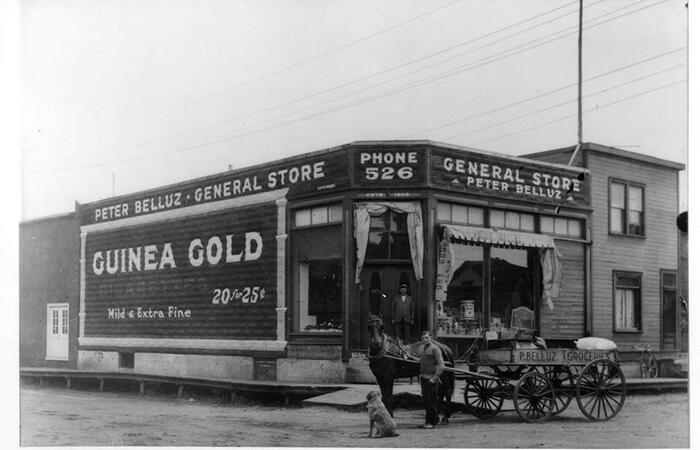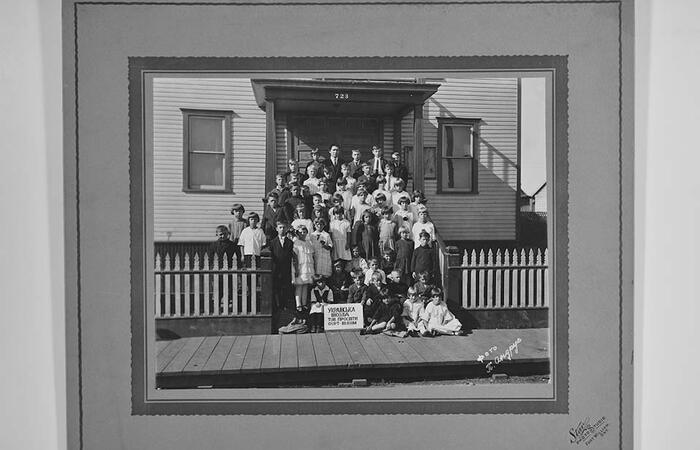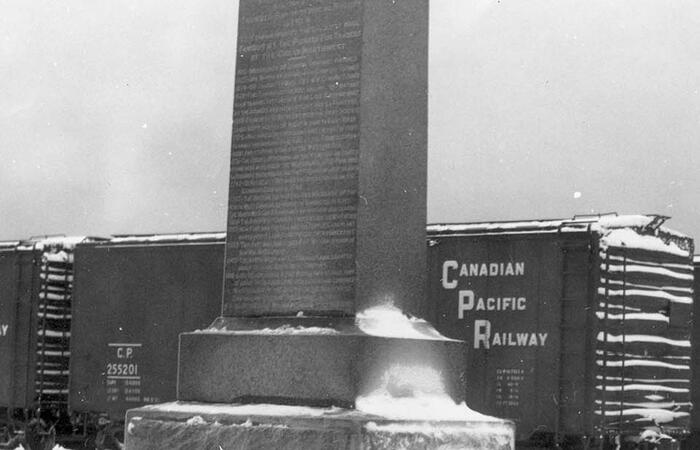When we think back to the origins of Thunder Bay, what first comes to mind are visions of the annual Great Rendezvous where buckskin-clad voyageurs arrived at Fort William paddling their canoes laden with a year’s worth of furs to sell, load up with supplies and catch up with the outside world before heading back into the seclusion of the forest for another year’s trapping. Heavy feasting, drinking, dancing and song characterized these events. But, fur trading can be dated back well before then to 1679, when the French Courier de Bois built a trading post at the mouth of the Kaministiquia River on the north shore of the inlet on Lake Superior. They traded with the Anishinabeg people who had lived there for many centuries.
The Anishinabeg called the inlet Animike meaning Thunder. So the French called it “Baie de Tonnaire” or Thunder Bay. In 1717, the French established another fur trading post on that site, Fort Kaministiquia, calling it after its namesake river. When the Pigeon River was set as the international boundary between Canada and the United States, the powerful Northwest Company (NWC) moved its operations from Grand Portage, MN to the mouth of the Kam, in 1803. It rebuilt the fort there renaming it Fort William after one of the company’s principal partners William McGillivray. For the next 60 years, Fort William became the place of the Great Rendezvous. However, when the Northwest Company amalgamated with the Hudson’s Bay Company in 1821, Fort William began to decline as the centre for fur trading. As the 1880s approached, it was clear the fur trade, the industry which had sustained them for two centuries, was winding down. Times were changing. The Canadian Pacific Railway, the CPR, was making its way eastward and from the west. A ribbon of steel would forge a link to unite Canada from the Atlantic to Pacific. The CPR made the Lakehead its western terminus, and with the railway, new opportunities for prosperity would emerge. The future looked very bright for the citizens of the Lakehead. Mining, forestry and railway- based grain trans-shipments became the dominant industries. The Old Fort, once a vibrant, bustling post, quietly closed in 1878. As the railway grew, the Northwest Company’s Fort William was gradually demolished to make way for rail yards, coal-hanging facilities and grain elevators. In 1902, the CPR demolished the last building from the fur trading era.
The next chapter of the East End
The Canadian Pacific Railway’s arrival from the west in 1882 would shape the next chapter of the East End’s development. The neighbourhood which sprang up in the following decades to house the many CPR employees had streets named after Scottish fur traders such as McNaughton, McTavish and McIntosh. They served as a testament to that chapter of the area’s history. The neighbourhood would also become known for its ethnic character. It was home to a wide variety of groups, including Finns, Greeks, Italians, Poles, Slovaks, Ukrainians and many others, that were socially isolated from the rest of Fort William society. The neighbourhood developed on both sides of the CPR tracks, with a western component in the area between Simpson Street and May Street south of the Neebing River.
Life was challenging
While work in the bustling city was plentiful, life was challenging. Tensions over labour conditions were an ever-present fact of life. Living conditions were also far from ideal. The neighbourhood grew faster than other areas of Fort William and overcrowding was a constant problem. City services couldn’t keep up with population growth. The eastern part of the area was constructed on what was essentially a bog and flooding occurred regularly. However, the East End’s social isolation improved in 1950 with the construction of an overpass on Pacific Avenue across the busy tracks, which made crossing them much easier. Despite these hardships, the cultural groups that inhabited the East End developed strong social bonds and built institutions that would anchor their communities. The East End today is a quiet neighbourhood. It’s primarily residential, but with several businesses, both new and old, still operating. The area’s skyline is punctuated by church cupolas and steeples that are still gathering places for some of the vibrant communities that call Thunder Bay home.
A microcosm
The East End has a long and complicated yet fascinating history in the development of our city. From its origins as the site of a vibrant fur trading fort, the East End saw the arrival of the railway, shipping, grain, forestry and mining. As well, it witnessed the growth of a diverse working-class neighbourhood to serve the needs of changing times. The East End is a microcosm of the story of Thunder Bay.







